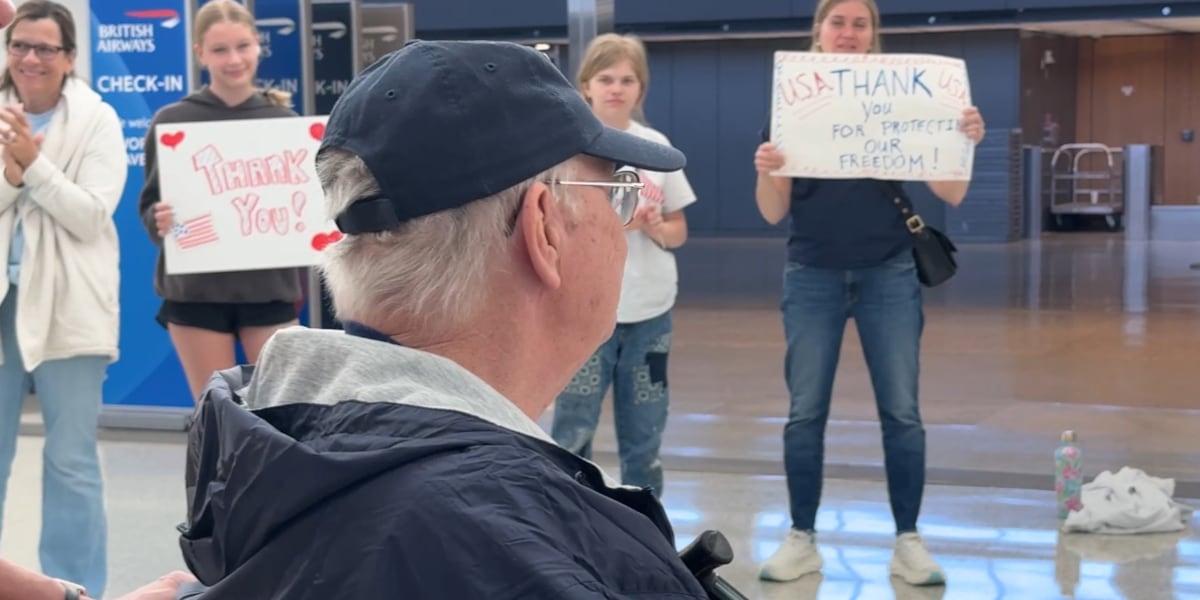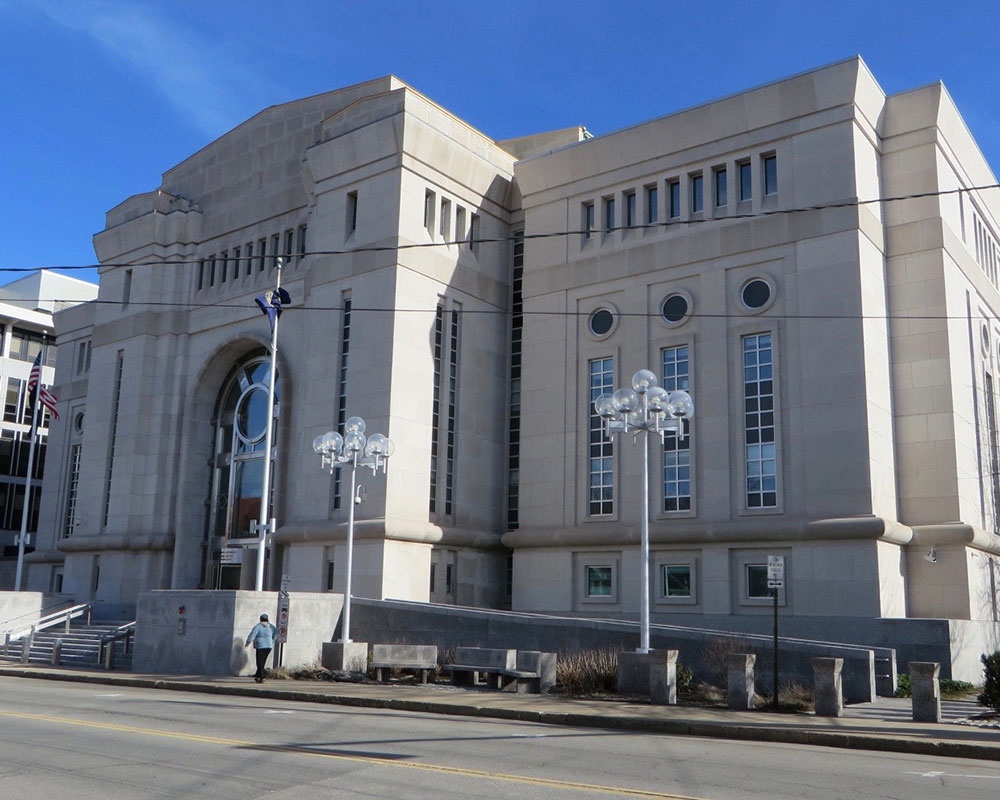North Dakota
What to know about North Dakota State at South Dakota

NORTH DAKOTA STATE (10-3) AT SOUTH DAKOTA (10-2)
WHEN/WHERE: 1:30 p.m. Saturday at the DakotaDome
TV: ABC
RADIO: KQSF-FM 95.7 Sioux Falls, KVHT-FM 106.3 Yankton
STREAMING: ESPN+
RECORD LAST YEAR: NDSU 12-3 (national runner-up); USD 3-8
SERIES: NDSU leads 57-27-2
LAST MEETING: USD beat NDSU 24-14 on Sept. 30 in Fargo
LAST WEEK: NDSU beat Montana State 35-34 in overtime; USD beat Sacramento State 34-24
RANKINGS: NDSU is unseeded; USD is seeded third
COACHES: NDSU — Matt Entz (5th year, 59-10); USD — Bob Nielson (8th year, 42-44)
The Coyotes and Bison rematch in the FCS quarterfinals in what is latest “biggest game” in South Dakota’s Division I history.
Until now, the Coyotes had never reached the FCS quarterfinals, nor played a game on network television. For NDSU, it’s a 14th consecutive trip to the quarterfinals — just another playoff run amid a span of domination.
The glaring difference for the Bison this go-around? The game is in Vermillion.
This will be just the fifth true-road game for North Dakota State in 51 playoff appearances, and it’s in a place where the Coyotes have excelled this season, going 6-1 and outscoring opponents 182-115.
A large reason why USD is hosting this game is because it defeated NDSU 24-19 in the regular season — a major win which bolstered the Coyotes’ resume while handing the Bison an early-season setback.
It was the type of game nobody saw coming. USD jumped to a 21-3 halftime lead behind a pair of deep touchdowns from Aidan Bouman to Carter Bell, then held on physically to pull off the road victory.
And in the two months since, both sides have become proven winners, each tallying 10 wins and defeating an assortment of ranked opponents to reach this point.
“Like all good teams, they’ve gotten better,” USD coach Bob Nielson said. “They’re a team that has continued to improve through the year.”
NDSU enters the Dome fourth nationally in rushing offense, averaging 5.98 rushing yards per play. The Bison’s ability to punish teams physically has continually improved as the season’s gone on, with its most impressive showing coming last week against No. 6 Montana State.
The Bison rushed for 296 yards, 162 of which coming from running back TaMerik Williams on just 11 carries. Three of NDSU’s touchdowns came on rushing plays of 44, 75 and 29 yards, respectively.
David Samson/The Forum
“They hit some big plays,” Nielson said. “That’s one of the things I’ve talked about, is when they’re hitting big plays in the running game, those yardage totals go up in a hurry and so you can’t misfit anything, you’ve got to be consistent with your tackling. And try to avoid as many of those big-hitter plays as you possibly can defensively with a consistency of effort and execution.”
Conversely, NDSU’s defense was vulnerable against the Bobcat’s efficient offense, allowing 279 rushing yards and 230 passing yards. Three of Montana State’s touchdowns came on plays of 25 yards or further. It was similar to the way USD scored against the Bison in the first matchup.
And in the rematch, the battle of both sides to force and mitigate explosive plays may prove the difference.
“We did a good job of minimizing their big plays, making them work hard for the yards,” Nielson said of the first matchup. “It was a strange game from a standpoint of very limited possessions … We did a lot of the things that we needed to do in that game to find a way to win and we’re going to need to do a lot of those same things well this week.”
-
Click to view the bracket

Jacob Nielson is a sports reporter for the Mitchell Republic. He joined the Mitchell Republic in July 2023 after graduating from Utah State University in 2023 with a degree in journalism and minor in history. He covers a variety of prep and collegiate sports throughout South Dakota.

North Dakota
D.C. residents welcome North Dakota veterans for Western ND Honor Flight

WASHINGTON, D.C. (KMOT/KFYR) – Washington D.C. residents cheered on our nation’s heroes as they arrived at the Capital Sunday morning for the Western North Dakota Honor Flight.
Two D.C. residents, Scott and Deb Gould spent their morning welcoming our veterans at Dulles International Airport.
While they don’t have ties to North Dakota, they said they have an absolute respect for those who served.
It’s also their first time doing something like this, and they said it will definitely not be the last.
As the veterans came in, the Gould family couldn’t hold back their tears.
“It’s just a little bit of giving back and these men and women didn’t necessarily get this when they came back. It’s a honor and a privilege to do that. We’re glad they’re here to be able to come to DC for the day,” said Scott Gould.
The veterans spent most of today touring D.C.
On Monday, they’ll be visiting the U.S. Capitol among other sites before they return to Minot.
They’re scheduled to arrive at 7 p.m., and everyone is encouraged to gather at the airport and welcome them home.
Copyright 2025 KFYR. All rights reserved.
North Dakota
Today in History: Grateful Taxpayer In N.D. Gives ‘Uncle’ An Extra $500

On this date in 1950, Uncle Sam was $500 richer, thanks to a grateful North Dakota businessman who had a deep and lasting love for his country.
Here’s the complete story as it appeared in the paper that day:
Grateful Taxpayer In N.D. Gives ‘Uncle’ An Extra $500
Uncle Sam was $500 richer this week, thanks to a grateful North Dakota businessman who has a deep and lasting love for his country.
J. S. Lamb, internal revenue collector for North Dakota, said in Fargo Wednesday that the money was enclosed with a federal income tax return.
With the form was a letter which read: “The other check for $500 is to witness our gratitude to a free, good land for its opportunities and blessings enjoyed by us and our enumerated exemptions.
“Considering the prosperity and freedom we have known and wishing to do more than is required of us, we make this gift to help keep our country free.”
Lamb said the $500 is being forwarded to Washington where it will be credited to the national defense fund.
North Dakota
Port: President Obama should apologize to North Dakota

MINOT — It’s been a long time coming, but North Dakotans are getting some justice for what was perpetrated on them by left-wing extremists during violent protests against the Dakota Access Pipeline.
First, a jury in Morton County found Greenpeace civilly liable,
to the tune of some $660 million,
for assisting the frequently unlawful protests. The plaintiff in the case was Energy Transfer Partners, the company that built and operates the pipeline.
Now, a federal judge has found the federal government, then under the control of President Barack Obama,
liable for more than $37 million in costs
incurred by the state of North Dakota while responding the protests (the court awarded roughly $28 million, subtracting a $10 million grant awarded during President Trump’s first term in office).
Judge Dan Traynor excoriated the federal government in his ruling. “The United States left North Dakota alone to defend itself from the violent and tumultuous protests,” he wrote.
“While North Dakota was drowning in the chaos of the Protests, the United States dropped an anvil into the pool and turned up the turmoil,” he continued.
The Obama administration “encouraged [and] supported protesters to remain and be at the DAPL Protests,” and because of these things, the federal government is liable for the heavy costs incurred by North Dakota taxpayers as a result of the months-long demonstrations.
Traynor found that the federal government allowed protesters to occupy federal land illegally, against its policies, despite being fully aware that the land was being used to launch violent and unlawful attacks against the pipeline project and law enforcement.
The Obama administration did not intervene to assist our state in putting a stop to the violence, despite apparent unlawful activity and a clear federal nexus. They didn’t enforce the law when protesters used federal land as a launch pad for their attacks. The Obama administration even
refused to send federal law enforcement resources to assist.
This was a dereliction of duty on par with President Donald Trump watching,
on television,
his supporters violently assault Congress on Jan. 6, 2021. But the Jan. 6 riot went on for a day. The Dakota Access Pipeline protests lasted for months.
Nor was it only the Obama administration that chose to stand aside while North Dakota burned. Our state’s law enforcement resources were completely overrun, yet when our state put out a call to other states for personnel, many states with Democratic leadership refused to assist,
bowing to pressure from left-wing activists.
“Early on, we had a number of states support our request for peace officer support,” Maj. Gen. Al Dohrmann of the North Dakota National Guard
told me in a December 2016 interview
. “Unfortunately, all jurisdictions that supported us were subject to protest in their own cities and capitols for providing support to North Dakota, along with intense pressure from various groups to not support North Dakota’s efforts to maintain the peace and rule of law.”
President Obama could have helped put an end to the protests swiftly and peacefully, but he didn’t.
As the nation’s top elected Democrat, he could have urged state-level Democrats to put politics aside and help, but he didn’t.
For that, he owes North Dakota an apology.
-

 Education1 week ago
Education1 week agoVideo: Shooting at Florida State University Leaves 2 Dead and 6 Injured
-
News1 week ago
Harvard would be smart to follow Hillsdale’s playbook. Trump should avoid Biden’s. | Opinion
-
Business1 week ago
Porto's Bakery moving forward in Downtown Disney, replacing Earl of Sandwich
-

 Politics1 week ago
Politics1 week agoSupreme Court blocks new deportations of Venezuelans in Texas under 18th century Alien Enemies Act
-

 Politics6 days ago
Politics6 days agoVideo: Hegseth Attacks the Media Amid New Signal Controversy
-

 Culture4 days ago
Culture4 days agoNew Poetry Books That Lean Into Calm and Joy Amid Life’s Chaos
-

 News1 week ago
News1 week agoThe NHL Stanley Cup Playoffs begin Saturday. Here's what to watch for
-

 Politics6 days ago
Politics6 days agoPope Francis and US presidents: A look back at his legacy with the nation's leaders



















